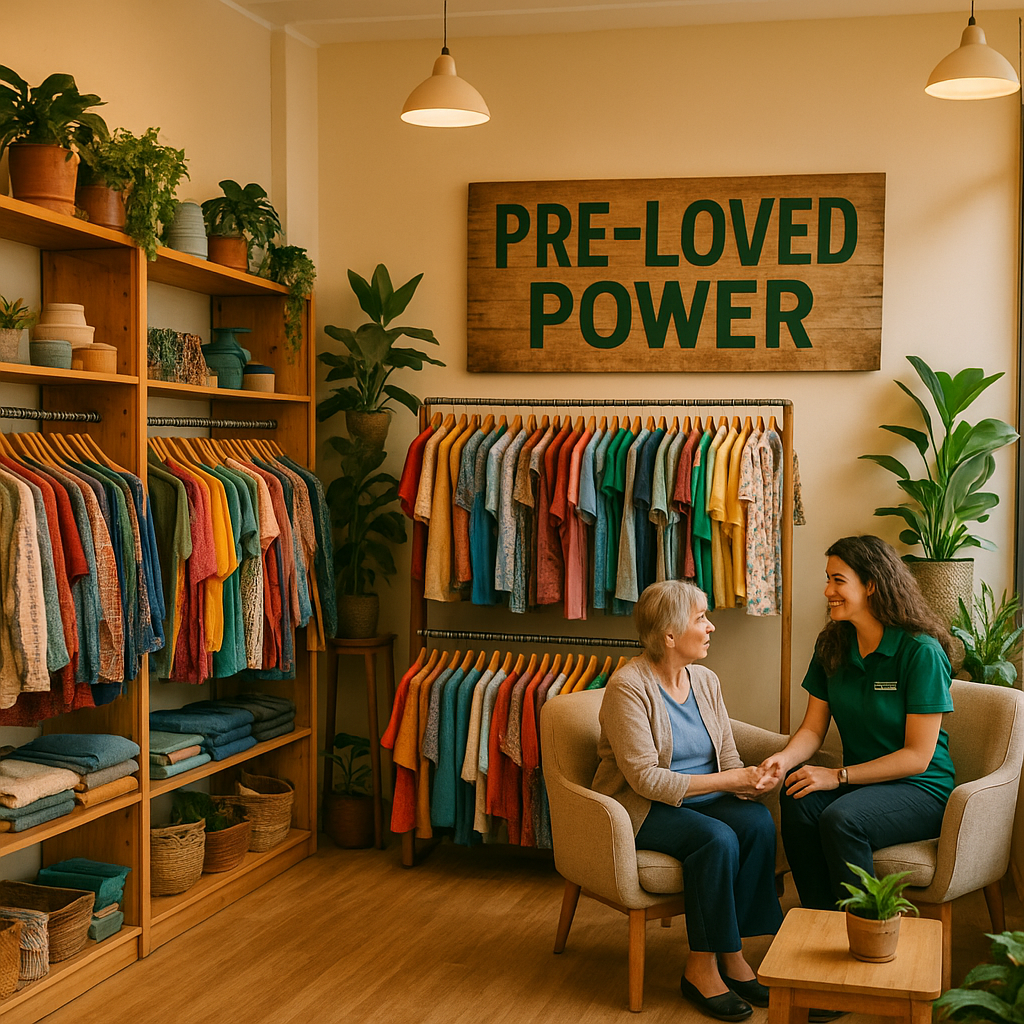Over the past decade, op shopping has gone from being a bit of a niche pastime to a full‑blown cultural movement. Back in the day you’d wander into a creaky vinyl‑lined shop, rummage through mismatched racks and hope for the best.
Today you’ll find slick interiors, curated ‘pre‑loved designer’ corners and even online previews of your local Salvation Army or Vinnies bargains. It’s like they’ve gone from grandad’s shed to your mate’s chic inner‑city apartment overnight.
Why Pre‑Loved Power Resonates
We’re all feeling the squeeze of skyrocketing rents, mortgage rates and grocery bills, so finding a way to look sharp without breaking the bank is a win. But beyond the financial perks, op shops offer that buzz of the treasure hunt, the delight of spotting a near‑new pair of boots for ten bucks, and the warm glow that comes from knowing your purchase helps fund local youth programmes or emergency relief efforts. It’s no wonder people are swapping FOMO for YOLO – You’re Often Loving Op‑shop finds!
From Dusty Shelves to Curated Collections
Ten years ago op shops were synonymous with basics and bulk, you’d brace yourself for a face‑plant into a sea of nylon shirts. Volunteers would give you a sympathetic nod and carry on sorting boxes. Now many outlets look like boutique stores, complete with timber shelving, mood lighting and staff who know their Levi’s from their Lululemon. Some even host ‘style nights’ where you can sip tea, mingle with fellow thrifters and pick up tips on reworking that vintage denim jacket.
Charities like The Smith Family have invested in sprucing up their spaces, while local church groups experiment with themed racks and colour‑coded sections. Even regional pop‑ups have sprung up in caravans or repurposed halls, bringing high‑quality finds to towns that once lacked regular op shop access.
The Cost‑of‑Living Catalyst
Inflation has bluntly reminded us that our pay packets don’t stretch as far as they used to, so many Aussies have gotten creative about where they spend their dosh. Op shops answer the call for everything from homewares to kids’ uniforms at pocket‑friendly prices. Weekend “haul days” have become a rite of passage for families and groups of mates, complete with coffee runs and cheeky bets on who’ll uncover the quirkiest find.
In regional communities, op shops do more than clear closets. They underpin fundraising for local schools, sporting clubs and disaster relief. During recent bushfires or floods, locals flocked to their nearest outlets not only for bargains but to funnel cash into recovery efforts.
A Nation of Niche Hunters
Walk down Sydney’s Newtown strip or Fitzroy’s Brunswick Street and you’ll see entire precincts devoted to second‑hand treasures. One shop specialises in mid‑century furniture, another in children’s clothes, a third in vinyl records that’ll set your hi‑fi humming like it’s 1975. Brisbane’s West End boasts op shops run by artist collectives selling upcycled artworks alongside ceramics and vintage tees.
Beach towns embrace the seasonal surge, stocking up on swimwear and surfboards just in time for the holidays. Inland, trailers trundle fresh donations into remote communities, ensuring the op‑shop love story reaches every corner of the country.
Tech‑Savvy Thrifting
Digital tools have turbocharged the op‑shop experience. Major charities post their standout items online, often through charity auctions or click‑and‑collect services. Facebook Marketplace and dedicated apps blur the line between private resellers and charity shops, creating a buzzing ecosystem of buys and sells.
Instagram influencers once peddling the latest fast‑fashion drop are now showing off their ‘thrift flips’—transforming a grubby dress into a runway masterpiece with a few snips and stitches. Local Facebook groups host swap meets, “buy nothing” circles and repair tutorials that turn your next op‑shop haul into a community‑driven upcycling workshop.
More Than Just a Bargain
Op shopping is a silent champion in the battle against climate change. Textiles make up a hefty share of landfill, but by extending the lifespan of clothes and goods, we slash demand for new production, conserve precious resources and cut greenhouse gas emissions. It’s circular economy 101, wrapped up in a shopping bag.
Meanwhile, every dollar you drop at an op shop helps fund vital social services—homelessness outreach, mental health programs, community gardens and more. Volunteers gain skills and social connections, donors get the joy of giving items a second life, and shoppers walk away with bargains that feel good in their wallets and in their hearts.
Looking Ahead, What’s Next?
If the last ten years are anything to go by, the next decade will be full of surprises. Picture collaborations between charity shops and up‑and‑coming designers who repurpose donated fabrics into limited‑edition pieces. Imagine op‑shop outlets doubling as cafés or co‑working spaces, offering mending classes and sustainability talks.
AI could help sort donations faster, predict hot‑ticket items and personalise your in‑store or online recommendations. City‑wide thrift trails might become festival‑style events, guiding curious visitors through precincts, complete with street food trucks and live music.
Embrace Your Inner Thrifter
Op shops are Australia’s secret weapon for stretching budgets, supporting communities and protecting the planet. So grab your tote bag, muster your sense of adventure and dive into the colourful world of pre‑loved treasures. Whether you’re on the hunt for a vintage statement piece or simply looking to do your bit for sustainability, op shops offer a shopping experience like no other.
Next time you need to revamp your wardrobe or kit out your home, remember the power of pre‑loved. You’ll save a buck or two, you’ll help fund a great cause, and you’ll make a dent in landfill—all while sporting a style that’s uniquely you.


